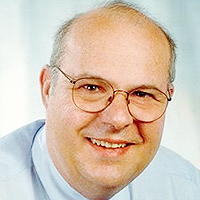Prediction of Stature using Percutaneous long bones of the Upper and Lower limbs among Asante and Ewe Ethnic Groups in Ghana
Published on: 8th August, 2025
Introduction: Sophisticated technological advancements for the identification of people are readily available in developed countries. Meanwhile, relatively less expensive algorithms in physical anthropometry could be employed for such identification purposes. Although such evaluations have been done in some countries, due to interpopulation variations, such relations should be ethnic-and sex-specific. Aim: Therefore, the present study sought to assess the relationship between the long bones of the upper and lower limbs among two ethnic groups in Ghana for stature estimation. Methodology: Using a purposive non-random sampling technique, participants made up of 140 Asantes and 102 Ewes aged 20 to 25 years were recruited after an ethical approval was obtained from the Committee on Human Research, Publication and Ethics, KNUST. Results: For the same sex, there was no statistically significant difference between Asantes and Ewes concerning height. The most useful parameters for stature estimation among the Asante males were left fibular and tibial lengths, with those of the females being left ulnar, fibular, and radial lengths. However, for the Ewe males, the most significant parameters for height estimation were right fibular and humeral lengths, whereas for the Ewe females, being right tibial and humeral lengths. Conclusion: Findings of the study are useful for the identification of humans with dismembered body parts involved in various disasters, such as automobile accidents. The database and formulae derived would be useful for stature estimation needed in biological profiling and other assessments of bedridden patients.
Surgical Technique of Medial Collateral Ligament Repair of the Knee with Bioinductive Membrane Augmentation
Published on: 5th August, 2025
Introduction: The medial collateral ligament (MCL), a primary stabilizer against valgus forces, often requires surgical intervention in severe injuries, especially when associated with anterior cruciate ligament (ACL) tears. However, MCL repair or reconstruction is typically reserved for patients who continue to experience persistent valgus instability after nonoperative management has failed. The use of synthetic and biological implants is increasingly popular to augment these procedures, providing both biomechanical reinforcement and promoting natural healing. BioBrace, a biocomposite of collagen and bioabsorbable microfilaments, provides structural support and enhances tissue healing. This article explores the surgical treatment of high-grade medial collateral ligament (MCL) injuries of the knee using BioBrace augmentation through a case series.Methods: Cohort of patients who underwent MCL repair surgery with a bioinductive membrane augmentation (BioBrace) between December 2023 and February 2024. This article presents surgical techniques, indications, and clinical outcomes from a case series, highlighting the benefits of BioBrace augmentation in improving stability and functional recovery. Results: A total of 4 patients underwent MCL repair surgery with BioBrace. Results show that patients experienced reduced instability, faster rehabilitation, and favorable outcomes without significant postoperative complications. Conclusion: This method offers a promising alternative for patients with complex knee injuries, especially athletes, by facilitating early rehabilitation and improving joint stability. Further research is recommended to evaluate long-term efficacy and optimize the surgical approach.
The Current Status of Renal Denervation in Hypertension Management
Published on: 5th August, 2025
Introduction: Hypertension is still one of the major causes of cardiovascular disease and death worldwide. Despite lifestyle modifications and medical treatment, blood pressure control rates remain suboptimal. The sympathetic nervous system plays a significant role in the pathophysiology of hypertension. Inhibition of the sympathetic nervous system leads to a reduction in blood pressure. In light of this, a catheter-based renal denervation procedure has been developed to selectively ablate the renal sympathetic nerves in order to lower blood pressure. Discussion: Renal denervation targets the afferent and efferent sympathetic nerves along the renal arteries. Interruption of the renal nerve fibers in the perivascular space reduces sympathetic-mediated renal vascular resistance, renin release, and sodium reabsorption. Consequently, the mechanisms driving systemic hypertension are gradually disrupted, and blood pressure falls over time. The current main methods of renal denervation are radiofrequency energy, ultrasound, and perivascular neurotoxin injection. Recent randomized sham-controlled trials have shown that renal denervation effectively and safely reduces blood pressure by approximately 5 to 10 mmHg in various hypertensive patients. It is important to have a multidisciplinary team of hypertension specialists and interventional experts to select appropriate patients for renal denervation. Shared decision-making is essential to consider hypertension-mediated organ damage, cardiovascular risk, and patient preferences. Conclusion: Catheter-based renal denervation is a relatively new treatment modality that provides meaningful and sustained reductions in blood pressure with an acceptable safety profile. Currently, it is recommended for patients with uncontrolled or resistant hypertension despite optimal lifestyle changes and medical treatment.
A Study on Incidence, Risk Factors, and Maternal Outcome of Placenta Accreta Spectrum in a Tertiary Care Hospital
Published on: 5th August, 2025
Background: Placenta accreta spectrum (PAS) refers to abnormal adherence of the placenta, including accreta, increta, and percreta, which can lead to severe maternal morbidity and mortality due to complications such as hemorrhage, invasion into adjacent organs, and need for blood transfusions.Methods: This retrospective study was conducted at the Government Maternity Hospital, Hanamakonda, Kakatiya Medical College, from January 2024 to June 2024. Data were collected on women presenting with PAS based on clinical and radiological diagnosis, including antenatal and intraoperative findings. Maternal demographic data, risk factors, and outcomes were analyzed.Results: Among 2,700 deliveries, 16 cases of PAS were identified (incidence: 0.59%). PAS subtypes consisted of 7 accreta, 5 increta, and 3 percreta. Major risk factors included advanced maternal age (56% ≥ 30 years), higher parity (81.2% gravidity 3 or more), previous lower-segment cesarean section (LSCS) in 87.5%, and history of D&C (31.2%). Placenta previa was present in 62.2% of cases. Unbooked status and late referrals were common (68.7%). Preterm termination occurred in 87.5% of cases, and 56.2% underwent cesarean hysterectomy. There was no reported perioperative maternal mortality or significant postoperative complications.Conclusion: Placenta accreta spectrum is increasingly recognized, i.e., PAS is being diagnosed and understood in more cases than in the past, because both the actual number of cases and clinical ability to diagnose the condition have increased dramatically in recent years, particularly among women with prior cesarean deliveries and placenta previa. Timely diagnosis, multidisciplinary management, and referral to tertiary care are essential to improve maternal outcomes.
Fiesta vs. Stress Condition the Incidence and the Age at Menarche. Forty Years of Research
Published on: 5th August, 2025
Introduction: The annual rhythm of menarche was proposed to be due to climatic annual variations. The discovery that peaks of incidence of menarche were found in the same months in the North and the South Hemispheres made us to think this hypothesis was not correct. Then we proposed that periods of study (stress) and vacation (relaxation, fiesta) were better factors for this rhythm. If this is so, days of fiesta should present more menarches than current days. In the second hypothesis the age at menarche should be modified by the vacation-study rhythm. Thus, I tested two hypotheses: I) This rhythm and the age at menarche are conditioned by climate factors mostly seasonal variations. II) the contrast between expectancy of fiesta (relaxation) and stress is the main factor of the rhythm and the variation on the age at menarche during the year.Method: The monthly incidence and age at menarche were obtained from samples of girls in Santiago (Chile), Medellín (Colombia), Debrecen (Hungary), Chennai (India) with data collected directly in these countries. A sample from Barrinhas (Riberao Preto, Brazil) was taken from literature. The climatic hypothesis was tested knowing the main climatic parameters by the latitude of these cities. The annual study-vacation rhythm was obtained from the academic calendar at any city and from direct information of our colleagues working in these cities. A correlate between the climatic rhythm and the study-vacation rhythm with the incidence or age at menarche complete the refutation or affirmation of the hypotheses. Also, the expected peaks of menarche at significance fiesta-days or the birthday were studied directly form the calendar of holidays or the cultural information given by our colleagues. Results: In the five samples taken individually or together there were clear contradictions with the climatic hypothesis. On the contrary the fiesta-stress hypothesis shows a clear correlation with the monthly incidence and the age at menarche. Days of national, religious fiesta or the birthday showed greatly significant peaks of menarche. Conclusion: Data refute the climatic hypothesis of the annual rhythm of menarche and agree with the fiesta (vacation)-stress (study) hypothesis.
Comparative Activities of Stem Bark Extracts of Anthocleista vogelii, Bligha sapida, Voacanga africana and Momordica charantia Leaf against Plasmodium berghei- berghei in Mice
Published on: 5th August, 2025
Background: The search for antimalarial molecules from plants necessitates comparative studies of ethnomedicinal antimalarial plants to quickly identify those that may be used in further search. Therefore, the median lethal dose, LD50, and the antiplasmodial activities of the methanol extracts of the stem barks of Anthocleista vogelii, Bligha sapida, Voacanga africana, and the leaf of Momordica charantia were evaluated against Plasmodium berghei berghei-infected mice using prophylactic, chemosuppressive, and curative models to compare their activities and identify the most active for further evaluation. Methods: The plant materials were collected, authenticated, and voucher specimens were deposited at the Faculty of Pharmacy Herbarium, OAU, Ile-Ife. They were separately macerated in methanol, and the median lethal dose, LD50 determined using Lorke’s method. The percentage parasitaemia, percentage reduction, chemosuppression and clearance, survival time, and percentage survivor of each, in the three models of antiplasmodial test against Plasmodium berghei berghei infected mice were assessed. Pyrimethamine and Chloroquine were positive controls, while normal saline was a negative control. One-way analysis of variance (ANOVA) followed by Student Newman-Keuls post hoc test (p < 0.05) was used for the analysis of data. Results and Conclusion: The lowest prophylactic ED50 and ED90 values 304 and 624 mg/kg of AV, comparable chemosuppressive ED50 values of all extracts and the significantly (p < 0.05) lower values of ED50 and ED90 of MC and VA in the curative assay can guide the selection of the plant extract(s) for further antimalarial evaluation.
Effect of Obesity on the Patients Undergoing to General Anesthesia: A Prospective Study
Published on: 30th July, 2025
Background: Obesity is a global health concern associated with a range of perioperative challenges, particularly during general anesthesia. Altered respiratory mechanics, pharmacokinetics, and increased comorbidities in obese patients may compromise anesthetic safety and recovery outcomes. Despite rising obesity rates in Libya, local data on anesthesia-related risks in this population remain limited.Objective: This study aimed to evaluate the effects of obesity on anesthetic recovery times and hemodynamic parameters in patients undergoing general anesthesia in a public hospital in Libya.Methods: A prospective observational study was conducted on 20 adult surgical patients from January to May 2023. Patients were divided into obese (BMI ≥ 30 kg/m2)and non-obese groups. Parameters assessed included time to spontaneous ventilation, Laryngeal Mask Airway (LMA) removal time, eye-opening time, and post-anesthesia Care Unit (PACU) discharge time. Intraoperative hemodynamic measures and the prevalence of comorbidities were also recorded. Statistical analysis was performed using SPSS version 20, with p < 0.05 considered statistically significant.Results: Obese patients (n = 12) exhibited significantly longer recovery times compared to non-obese patients (n = 8): spontaneous ventilation (12.8 vs. 9.4 min, p = 0.002), LMA removal (14.1 vs. 10.1 min, p = 0.001), eye opening (13.5 vs. 9.7 min, p < 0.001), and PACU discharge (68.3 vs. 49.5 min, p < 0.001). Obese patients also had lower mean arterial pressure (82.4 vs. 91.5 mmHg, p = 0.026), higher heart rates (95.2 vs. 88.3 bpm, p = 0.041), and reduced oxygen saturation (94.1% vs. 96.7%, p = 0.018). Comorbidities such as hypertension and diabetes were significantly more prevalent among obese patients.Conclusion: Obesity significantly prolongs anesthetic recovery and impairs hemodynamic stability in surgical patients undergoing general anesthesia. These findings support the need for targeted perioperative strategies, preoperative risk stratification, and extended postoperative monitoring for obese individuals, particularly in resource-limited healthcare settings.
Capabilities Approaches Applied to the Homes of the Future
Published on: 30th July, 2025
The capabilities approach, based on the work of Sen and Nussbaum, proposes a transformation in housing design by prioritizing human well-being over economic criteria. This framework assesses individuals’ real opportunities to develop fulfilling lives (“capabilities”), responding to contemporary challenges such as climate change and urbanization. Recent studies indicate that 68% of architects integrate this approach into sustainable projects (Chen, et al. Journal of Sustainable Architecture, 2023, Q1), demonstrating its relevance for creating resilient and inclusive environments. The methodology combines theoretical analysis (UTAUT model for technology adoption and the capabilities approach) with global case studies. Designs are examined that incorporate: Smart technology: IoT and AI systems for security and energy efficiency; Biophilic design: Integrating nature into interior spaces; and Net-Zero Homes (NZEH): Energy self-sufficiency through renewables. Data were collected from projects in Belgium, Australia, and the US, assessing social and environmental impact using well-being and sustainability metrics. We determined the results and discussed the approach using Positive Impact: Smart-technology homes improve autonomy in older adults by 72% (Liu, et al. Gerontology, 2022, Q1). Projects such as Savonnerie Heymans (Brussels) reduced energy consumption by 40% through solar panels and thermal insulation, while increasing social cohesion with community spaces. Biophilic design: Associated with 30% less stress and 25% higher productivity; Barriers: High initial costs (up to 20% more than conventional housing) and regulatory complexity limit widespread adoption. Furthermore, feminist and decolonial critics warn that the approach can perpetuate inequalities if it ignores sociopolitical contexts. In conclusion, the capabilities approach revolutionizes future housing by merging human well-being, sustainability, and inclusion. However, its implementation requires overcoming economic and ethical challenges: Accessibility: Universal designs for vulnerable populations. Collaborative governance: Policies that balance innovation, data privacy, and affordability. Cultural adaptation: Integration of non-Western perspectives. Projections indicate that NZEHs will grow by 40% by 2030, highlighting their potential to build equitable and resilient societies.
Walnut Pruning Residues as a Renewable Energy Resource for Greenhouse Heating in the South-Central Region of Chihuahua, Mexico
Published on: 29th July, 2025
The objective of this research was to estimate the energy potential of walnut pruning residues (biomass) as a renewable resource for use in greenhouse heating systems in the south-central region of the state of Chihuahua. To achieve this, data were collected on the weight of fresh firewood generated per tree based on trunk diameter, considering three common pruning methods practiced in the area. Additionally, the percentage of weight loss during the biomass drying process was determined, and the regional area cultivated with walnut trees was documented. Based on this information, the potential energy availability and the feasibility of its use as a sustainable energy source for the agricultural sector under controlled climate conditions were calculated.
Effects of the Snuff with Sodium Bicarbonate (Toumbak) on the Blood Pressure among Sudanese Users
Published on: 29th July, 2025
Background: Toumbak, a form of smokeless tobacco made from Nicotiana rustica and sodium bicarbonate, is widely used in Sudan and poses potential health risks, particularly concerning cardiovascular function. Despite its high prevalence, especially among adult males, limited data exist regarding its impact on blood pressure.Objective: To assess and compare blood pressure parameters among Sudanese Toumbak users and non-users, and to investigate the association between Toumbak use, age, and gender with systolic blood pressure (SBP), diastolic blood pressure (DBP), and pulse pressure (PP).Methods: A comparative cross-sectional study was conducted from 2022 to 2025 among 1000 Sudanese adults (500 Toumbak users and 500 matched non-users) aged 18–60 years in Khartoum State. Blood pressure measurements were recorded using a digital sphygmomanometer following WHO guidelines. Independent t-tests and ANOVA were used to compare SBP, DBP, and PP between groups. A p - value < 0.05 was considered statistically significant.Results: Toumbak users exhibited significantly elevated SBP (141.7 ± 21.9 mmHg), DBP (89.3 ± 6.0 mmHg), and PP (52.4 ± 19.3 mmHg) compared to non-users (SBP: 121.2 ± 3.2 mmHg, DBP: 80.5 ± 3.8 mmHg, PP: 40.7 ± 3.9 mmHg), with p < 0.001 for all parameters. Males demonstrated significantly higher SBP (145.6 ± 24.0 mmHg) and PP (56.7 ± 22.1 mmHg) than females (SBP: 137.8 ± 18.6 mmHg, PP: 48.2 ± 14.5 mmHg). While no statistically significant differences were observed in BP across age groups, adolescents and middle-aged users had the highest SBP.Conclusion: Toumbak use is significantly associated with elevated blood pressure and increased cardiovascular risk, particularly among male users. These findings highlight the need for targeted public health interventions and awareness campaigns addressing the health consequences of smokeless tobacco in Sudan.




